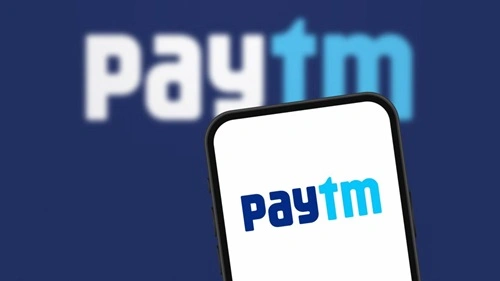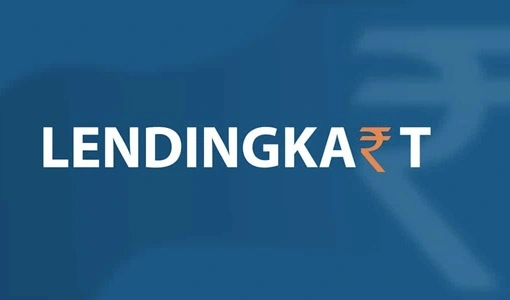When UPI came into the picture, it was only then that some FinTech companies just exploded in terms of popularity in India, and that resulted in massive revenue and profits for these companies. Right now, some of the biggest FinTech companies are helping to carry out quite literally billions of UPI transactions every single year. So, no wonder, when we tell you that this FinTech segment of the Indian market is expected to grow to as much as $95.30 billion by 2030, that should be a very believable fact for you, right? Though it is only possible because of some leading and top FinTech companies doing their thing in India in 2025 and onwards, so let’s just talk about that for a moment in this list of the Top 10 Leading Fintech Companies in India 2025.
1. PhonePe

At the very top of the list today, there is a company that is responsible for almost 50% of the UPI transactions in India. We mean the crazy tech unit of the finances called PhonePe that is beyond any other one just by the fact that it is doing more than 47% of the UPI transactions (to be precise) in the whole country. Simply by this figure, one can see why it has become the go-to payment app for millions of people. PhonePe’s major competitive advantage is its solid regional concentration and its merchant-friendly ecosystem, mainly in Tier 2 and Tier 3 cities, where digital adoption is rising rapidly. It went beyond 12 billion in valuation, making it a decacorn.
2. Paytm

Founded as a mobile recharge app, Paytm has evolved into one of the most comprehensive fintech ecosystems with a massive transaction volume of over 8.5 billion in the financial year 2024-25. The company is known to be diversifying its customer base equally from urban and semi-urban areas. Though it went through a downfall recently, it is back at it again, with its various services offered, the digital wallet has transformed into a multipurpose digital bank, leading to customer convenience in making payments, investing, insuring, borrowing, etc.
3. Razorpay

Razorpay, unlike the majority of similar companies, didn’t depend heavily on big acquisitions, but rather built all the things themselves. And that was exactly the reason why it was scalable. Being in the third place, Razorpay has the largest control over internet payment systems for businesses, thus it is the go-to solution for thousands of digital stores and startups. It’s worth is still over 7 billion dollars, and it keeps on being the leader of the B2B payments market.
4. CRED

One of the most stylish ways to pay your credit card bill has to be CRED. The company changed the mundane activity of bill payment into a way of living, and thus, it now serves a user base of more than 7.5 million with excellent credit scores. However, as of 2025, CRED means more than just offers and cashback. Initially, it grew through credit card loans; now, it offers personal loans, exclusive brand deals, and several other luxurious financial products.
5. Zerodha

Here is a fintech company that expanded its business solely on its own cash, literally, a bootstrapped project. Zerodha, the number one stockbroker platform in India, accounts for 20% of the retail trading market. Its zero brokerage on equity delivery is still one of the major draws, particularly for new investors. However, the one feature that absolutely differentiates it from the rest is the emphasis on investor education. Customer-centricity, openness, and stability are the qualities that have ensured Zerodha’s position among the wealthtech leaders.
6. Pine Labs

It’s one of the few fintech companies that you interact with, even if you don’t realize it. In the sixth position, Pine Labs is the power that runs the point of sale (POS) operations at more than 350,000+ retail stores in India and Southeast Asia. Simply put, Pine Labs must have been working behind the scenes for you to have a smooth card swipe, EMI offer, or loyalty program without even realizing it. The company is estimated to be worth approximately 5 billion dollars in 2025, with a continuous growth in areas such as consumer credit and gift card technology.
7. PolicyBazaar

In the past, purchasing insurance was a complicated process that required a lot of paperwork and calls. Things have changed significantly. Digital-first insurance comparison gave PolicyBazaar a major breakthrough, and the company is now the undisputed leader in the insurtech sector with a 25% market share of online insurance transactions in India. And now, as of 2025, with the help of AI-powered proposals, the platform has customized the insurance advice that fits the customer’s needs.
8. BharatPe

Back when digital payments were in their super nascent stage, BharatPe came in to make the payments free for the local shops. With zero-fee UPI acceptance and universal QR codes, BharatPe is the market leader that enables small merchants to go cashless. Such a move allowed the company to become a leader in smaller cities and towns, where the two factors, affordability and ease of use, drive the markets. BharatPe has expanded into short-term lending and Buy Now, Pay Later (BNPL) products with an equally solid reputation by 2025.
9. Lendingkart

Usually, most banks are reluctant to lend to startups or businesses that operate outside the formal sector; however, Lendingkart perceived this situation as a chance. Using AI and machine learning, Lendingkart provides small businesses with hassle-free, quick loans without the need for collateral, which is the case even if the credit history is absent. It has already spread over ₹6,500 crores of loans to various parts of India before the deadline of 2025.
10. Groww

Groww has transformed from a simple investing app to a complete financial platform. Initially, Groww was limited to mutual funds; later, it was opened for stock investing, and at present (2025), it also provides FDs, US stocks, and insurance. With its neat design and hassle-free onboarding, it has gained a lot of popularity among the youth and new investors. And right now, it is valued at around $3 billion.
Conclusion
That’s about it. See, after the insane growth that the FinTech segment has seen in India, there are more and more such companies coming up with better solutions and newer products. So it is just a matter of a few years that when we make an updated version of this list a few years down the line, you’ll see some new names on this list.